Rafael Barbudo
Evolving machine learning workflows through interactive AutoML
Feb 28, 2024Abstract:Automatic workflow composition (AWC) is a relevant problem in automated machine learning (AutoML) that allows finding suitable sequences of preprocessing and prediction models together with their optimal hyperparameters. This problem can be solved using evolutionary algorithms and, in particular, grammar-guided genetic programming (G3P). Current G3P approaches to AWC define a fixed grammar that formally specifies how workflow elements can be combined and which algorithms can be included. In this paper we present \ourmethod, an interactive G3P algorithm that allows users to dynamically modify the grammar to prune the search space and focus on their regions of interest. Our proposal is the first to combine the advantages of a G3P method with ideas from interactive optimisation and human-guided machine learning, an area little explored in the context of AutoML. To evaluate our approach, we present an experimental study in which 20 participants interact with \ourmethod to evolve workflows according to their preferences. Our results confirm that the collaboration between \ourmethod and humans allows us to find high-performance workflows in terms of accuracy that require less tuning time than those found without human intervention.
Grammar-based evolutionary approach for automated workflow composition with domain-specific operators and ensemble diversity
Feb 03, 2024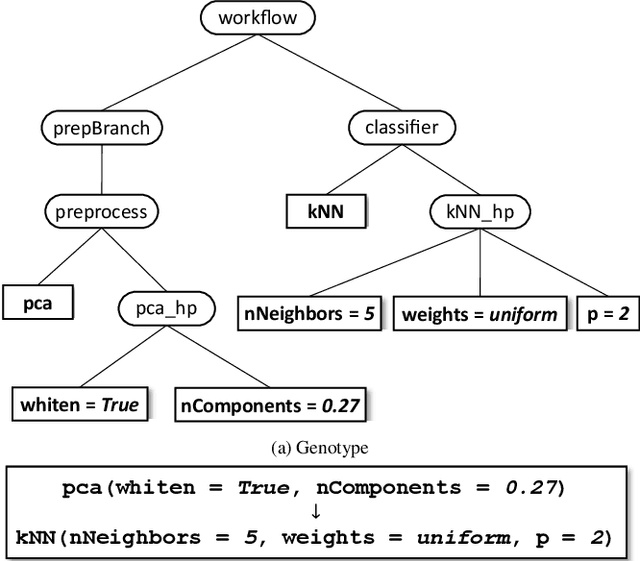
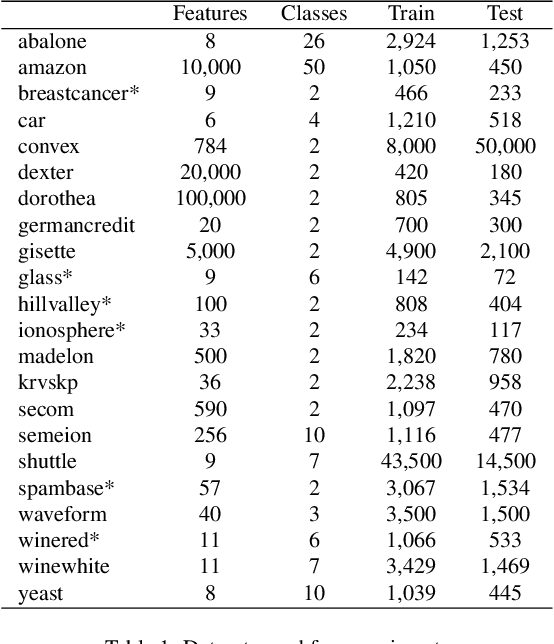
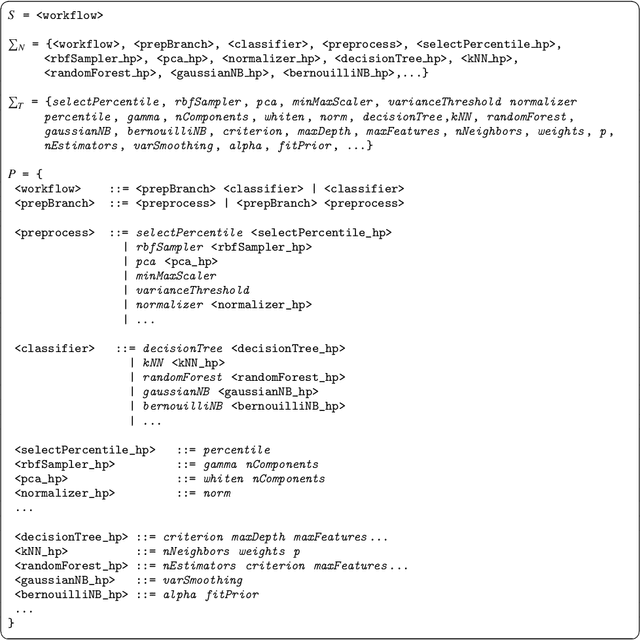
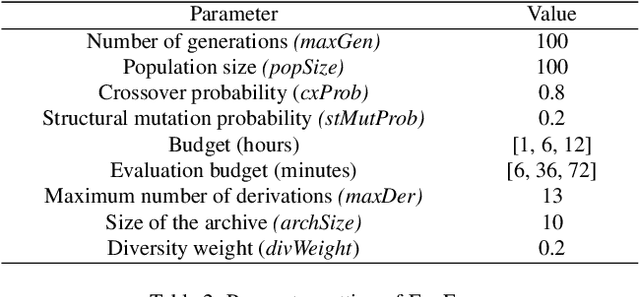
Abstract:The process of extracting valuable and novel insights from raw data involves a series of complex steps. In the realm of Automated Machine Learning (AutoML), a significant research focus is on automating aspects of this process, specifically tasks like selecting algorithms and optimising their hyper-parameters. A particularly challenging task in AutoML is automatic workflow composition (AWC). AWC aims to identify the most effective sequence of data preprocessing and ML algorithms, coupled with their best hyper-parameters, for a specific dataset. However, existing AWC methods are limited in how many and in what ways they can combine algorithms within a workflow. Addressing this gap, this paper introduces EvoFlow, a grammar-based evolutionary approach for AWC. EvoFlow enhances the flexibility in designing workflow structures, empowering practitioners to select algorithms that best fit their specific requirements. EvoFlow stands out by integrating two innovative features. First, it employs a suite of genetic operators, designed specifically for AWC, to optimise both the structure of workflows and their hyper-parameters. Second, it implements a novel updating mechanism that enriches the variety of predictions made by different workflows. Promoting this diversity helps prevent the algorithm from overfitting. With this aim, EvoFlow builds an ensemble whose workflows differ in their misclassified instances. To evaluate EvoFlow's effectiveness, we carried out empirical validation using a set of classification benchmarks. We begin with an ablation study to demonstrate the enhanced performance attributable to EvoFlow's unique components. Then, we compare EvoFlow with other AWC approaches, encompassing both evolutionary and non-evolutionary techniques. Our findings show that EvoFlow's specialised genetic operators and updating mechanism substantially outperform current leading methods[..]
* 32 pages, 7 figures, 6 tables, journal paper
GEML: A Grammar-based Evolutionary Machine Learning Approach for Design-Pattern Detection
Jan 13, 2024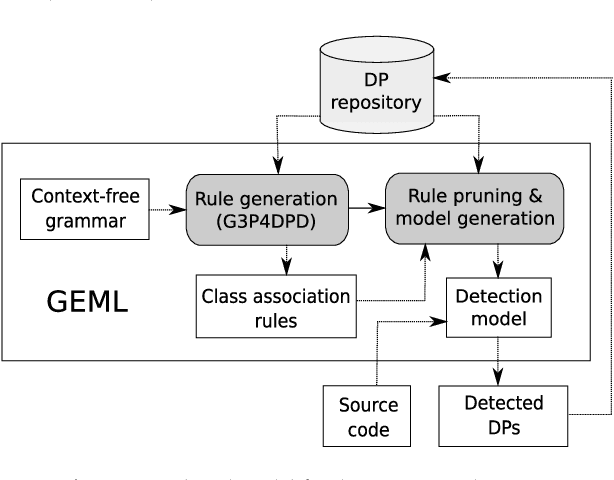
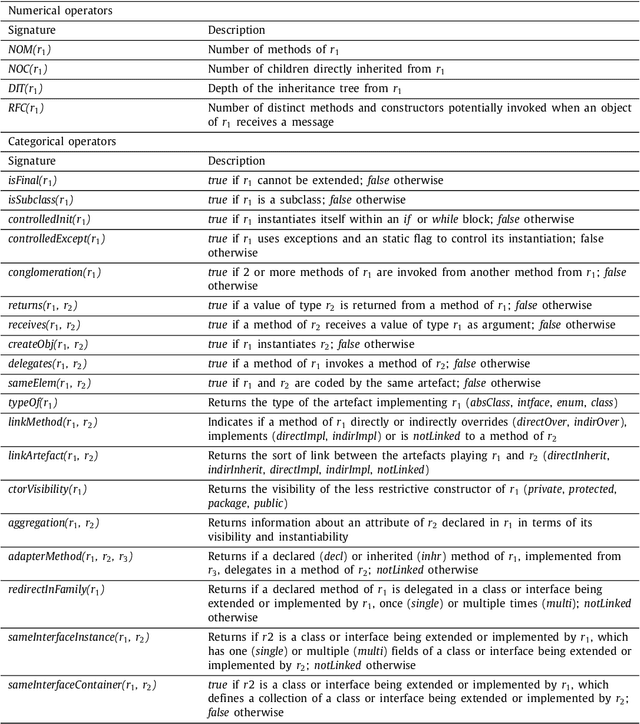

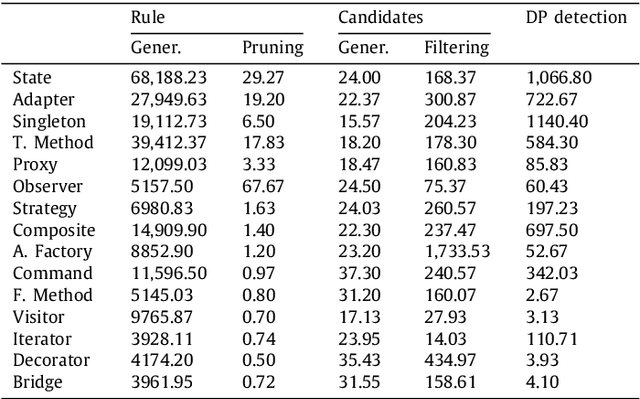
Abstract:Design patterns (DPs) are recognised as a good practice in software development. However, the lack of appropriate documentation often hampers traceability, and their benefits are blurred among thousands of lines of code. Automatic methods for DP detection have become relevant but are usually based on the rigid analysis of either software metrics or specific properties of the source code. We propose GEML, a novel detection approach based on evolutionary machine learning using software properties of diverse nature. Firstly, GEML makes use of an evolutionary algorithm to extract those characteristics that better describe the DP, formulated in terms of human-readable rules, whose syntax is conformant with a context-free grammar. Secondly, a rule-based classifier is built to predict whether new code contains a hidden DP implementation. GEML has been validated over five DPs taken from a public repository recurrently adopted by machine learning studies. Then, we increase this number up to 15 diverse DPs, showing its effectiveness and robustness in terms of detection capability. An initial parameter study served to tune a parameter setup whose performance guarantees the general applicability of this approach without the need to adjust complex parameters to a specific pattern. Finally, a demonstration tool is also provided.
* 27 pages, 18 tables, 10 figures, journal paper
 Add to Chrome
Add to Chrome Add to Firefox
Add to Firefox Add to Edge
Add to Edge